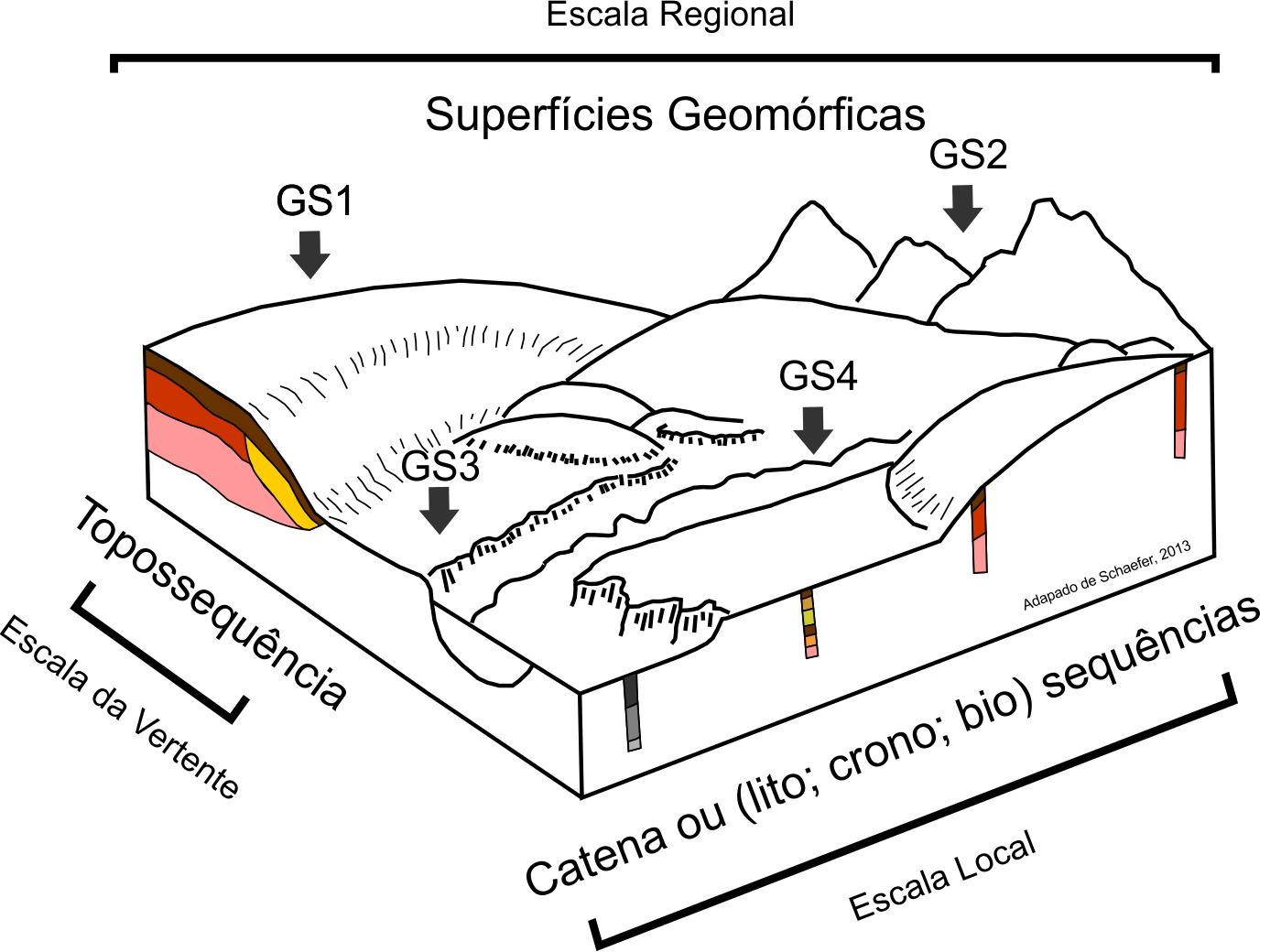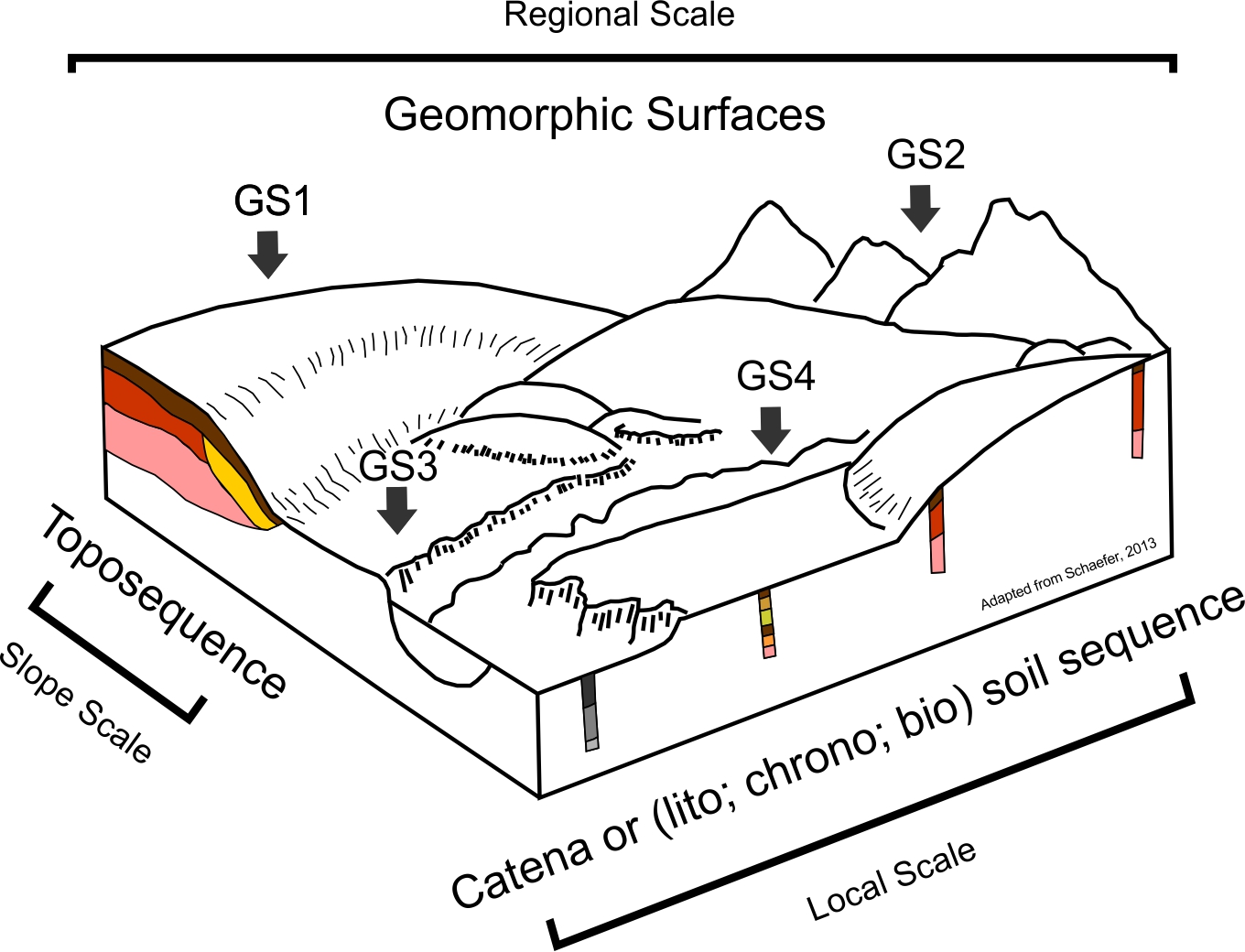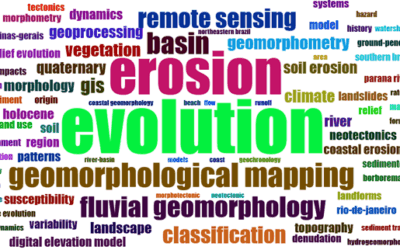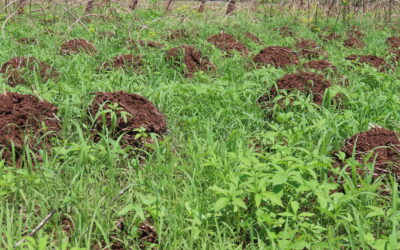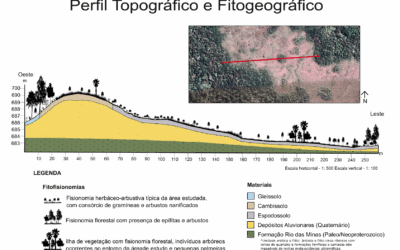In Soil Geography, few terms are as widely used — and as poorly understood — as “toposequence.” Over the decades, this concept has been applied at different scales and for various purposes, but not always with precision. So, what is (or should be) a toposequence?
In an article published in the Revista Brasileira de Ciência do Solo, researchers from three Brazilian universities, under the leadership of Grace B. Alves, critically examine how the term has been used, based on an analysis of over a thousand scientific publications. From this review, the group proposes a return to the original meaning of “toposequence” and the adoption of more consistent criteria for its application.
Three Different Approaches to the Same Term
The study identifies three main ways in which the term “toposequence” has been used:
1. Geomorphic surfaces (regional scale): used to represent the spatial distribution of soil classes associated with broad landform units. While valuable for exploratory surveys, this approach does not represent a toposequence in its genetic and process-based sense.
2. Catena: refers to soil profiles in different slope positions, analyzed discontinuously and with a taxonomic focus. In this case, soils are interpreted as independent elements, rather than parts of an integrated evolutionary system.
3. Toposequence (in the strict sense): in this approach, the soil is conceived as a continuous cover, in which horizons transform laterally along the slope. These transformations result from the influence of topography and water fluxes, revealing a dynamic of coevolution between soil and landform.
Graphical representation of the main approaches to spatial soil variation
Source: Adapted from Schaefer (2013), as presented in Alves et al. (2024).
By distinguishing these concepts, the article proposes a more rigorous taxonomy: the term “catena” should be used when the focus is taxonomic and discontinuous; “geomorphic surface” should be used for regional-scale interpretations; and “toposequence” should be reserved for analyses of the lateral continuity of pedogenetic processes.
Why Does This Matter?
Conceptual ambiguity affects the methodological quality of studies and hampers the comparability of results. When the concept is clearly defined, researchers can build cumulative knowledge and develop coherent research agendas.
Furthermore, the article proposes a more precise conceptual framework:
– Use “catena” for discontinuous taxonomic sequences
– Use “geomorphic surface” for regional-scale patterns
– Use “toposequence” only for analyses based on the lateral continuity of the pedological cover.
Future Research Pathways
Based on this review, the article outlines promising directions for pedology and geomorphology. Among them, four key research fronts stand out:
– Structural analysis of the soil cover
– Reconstruction of tropical landscape evolution
– Numerical slope modeling
– Use of geoindicators in pedogenetic processes
Therefore, this represents a fertile agenda for multiple interrelated publications, with the potential to enhance the visibility of researchers working at the soil–landscape interface.
📖 Read the full article: https://doi.org/10.36783/18069657rbcs20230137
🔗 Saiba mais no site do grupo COLAPSO: colapso.ggf.br
Reference: Alves GB, Oliveira FS, Silva AHN, Souza Junior VS. Toposequence: What are we talking about? Rev Bras Cienc Solo. 2024;48:e0230137. https://doi.org/10.36783/18069657rbcs20230137



